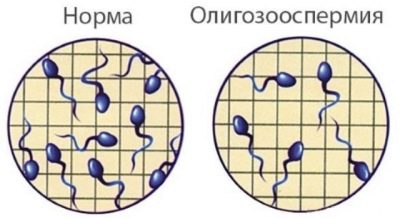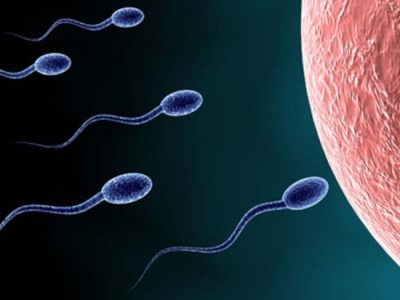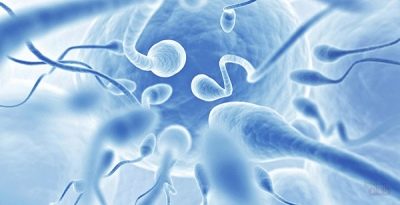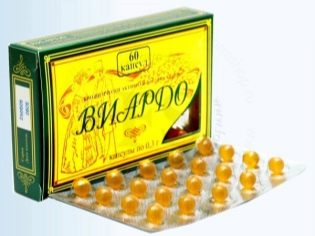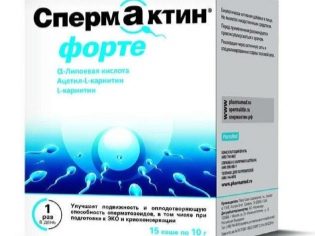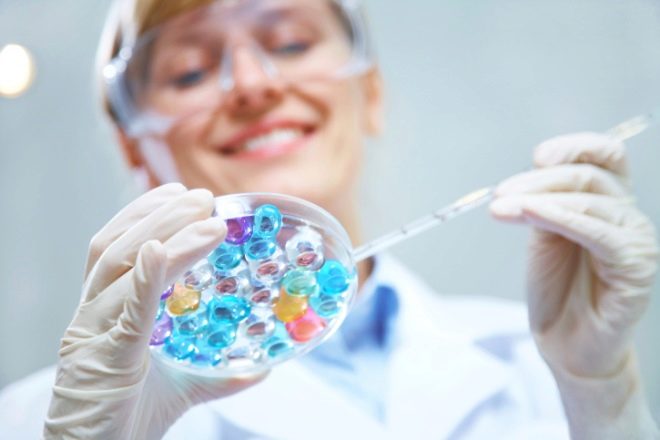What is oligozoospermia and how does it affect conception?
Male infertility is more common than it may seem. Only now it becomes known about him only when the couple goes to the doctor with a request to help in the conception of the baby, that is, after long and unsuccessful independent attempts. According to the results of spermogram, a man can be diagnosed with a disease such as oligozoospermia. That this is and whether the family has a chance to have children with such a diagnosis, we will tell in this article.
What it is?
Oligozoospermia is often referred to as oligospermia, considering the second type. There is a difference between these two names, but, as a rule, both phenomena mean the same problem. Oligospermia is a decrease in the amount of ejaculate, and oligozoospermia is a decrease in the concentration of spermatozoa in seminal fluid. Most often, these phenomena are directly interrelated, but there may be exceptions in which a decrease in the number of germ cells in the seminal fluid is recorded in the normal volume of sperm.
According to WHO, which are designed to assess the criteria and indicators of semen, in 1 milliliter of sperm in a healthy man should be at least 15-40 million sperm. Downward deviations from these values are a reason for establishing the diagnosis of “oligozoospermia”.
Extent of the disease
Depending on the specific decrease in the concentration of germ cells in the ejaculate four degrees of oligozoospermia are distinguished:
- 1 degree - the presence in 1 ml of seminal fluid less than 15 million cells;
- 2 degree - the concentration of sperm in 1 milliliter of sperm - 10-12 million;
- Grade 3 - 5-10 million germ cells in 1 ml of semen;
- 4 degree - less than 5 million sperm per milliliter.
The greater the severity of the disease, the more difficult it is for a couple to become pregnant naturally.
Causes
The reasons for which sperm cells may be less than the norm, there are many. All of them are divided into two large groups: congenital causes and acquired. Congenital medics include cryptorchidism, congenital absence of one testicle, varicocele, congenital insufficiency of testosterone production, which is directly involved in the synthesis of germ cells.
Much more common causes of the acquired nature. These are primarily the consequences of "stormy youth": latent sexually transmitted infections, which a man may not even guess for years, as well as venereal diseases he had suffered. Not the last place is occupied by bacterial and viral diseases of the urinary tract, especially herpes virus of the second type, as well as chronic and "neglected" ailments.
All men in their youth loved to fight. Then, few of them thought that injuries that could cause blows "below the belt" could trigger pathological processes, which would certainly affect later on the composition and quality of sperm. Mechanical injury is possible during horse riding or cycling.
Hormonal causes are also widespread among men, especially among those engaged in professional strength sports and fitness.Many take anabolic steroids for more impressive athletic performance.
Often, oligozoospermia is diagnosed in men who abuse alcohol, drugs and tobacco. Adverse factors can also affect men’s health: radiation, exposure to toxins, contact with heavy metal salts and pesticides.
A special place among the causes of oligozoospermia is the nervous factor. Due to severe stress, every fifth man with this diagnosis develops the disease.
The development of pathology contribute to kidney and liver failure, overweight and obesity, a sedentary lifestyle. Also, overheating of the testicles can be reflected in the number of spermatozoa, so lovers often take a steam bath, visit the sauna or drive in a car with the electric heating of the seats often turn out to be patients of reproductive physicians.
Improper diet, in which the man in the diet does not have enough protein foods, can also be the cause of oligozoospermia. A bad habit can be served by a fast food raid: there are many dyes and preservatives in this food that have a destructive effect on the male sex cells, inhibiting their formation and growth.
It is not always possible to establish the reason, and then people talk about idiopathic male infertility.
Chances of pregnancy
With such a pathology as oligozoospermia, one can become pregnant independently without the intervention of reproduction specialists, but The chances of conceiving naturally depend on the degree of affliction. If a man has a disease of the first degree, the chances of conception in each menstrual cycle, provided that sex occurs at a favorable time for conception, are about 26%.
The possibility of fertilization in the second degree of oligozoospermia is estimated at about 15%. At the third degree, the chances are significantly lower - only 2.7%. And at the fourth stage of the disease the chances tend to zero.
Treatment, if it is started in a timely manner, helps more than 95% of men with oligozoospermia to become fathers. To cure this disease is quite possible, if you have patience and approach the issue with full responsibility.
Treatment
Treat oligozoospermia with the obligatory account of the true cause that caused it. If this is an infectious disease, the man is being treated with antibiotics, antiviral medicines are prescribed for viral infection, as well as drugs to strengthen the immune system. Varicocele is treated surgically - after the surgery, the problem is completely solved.
For men who have reproductive health problems caused by chronic stress, visits to the therapist, vacation, sea, fruit, massage and light herbal preparations with a sedative effect are recommended. Perhaps it makes sense to change jobs or move from the city to a secluded house in the country.
For hormonal disorders, the endocrinologist will prescribe a treatment regimen. It will depend on what kind of hormones are not enough, and which are present in excess. With obesity, sometimes it is enough just to lose weight. Most of the causes of the disease can be successfully treated.
All men are recommended alternation of work and rest, the absence of excessive physical exertion, but a fairly active lifestyle, in which a man can maintain himself in a normal physical form. In addition to the main treatment aimed at eliminating the cause, supplements are prescribed, such as Viardot, Spermaktin, as well as vitamins A, E, C, folic acid, preparations containing zinc and selenium.
A man is not recommended to take hot baths for a long time, to visit baths and saunas, to wear tight fitting linen and tight pants.
The effectiveness of treatment, as well as its duration depends on the degree of the disease.With first-degree oligozoospermia, it is enough to simply eliminate stress, adjust nutrition, take vitamins and drugs to improve sperm quality.
In the second degree of the disease without drugs that improve spermatogenesis, not enough. Treatment is usually long - at least six months. In the third degree, therapy is usually even longer.
Treatment of folk remedies
If a man does not have an allergy to bee products, then bee's royal jelly will help him in the difficult task of combating oligozoospermia. It is taken on an empty stomach by teaspoon per day. Since ancient times, wormwood has been considered the great "helper" of the male population. A water extract is prepared from its seeds, which a man should take during the day in small portions.
The quality of sperm improves markedly from the systematic daily use of dogrose broth. It is made from berries and given to a man 2 tablespoons 3 times a day. Well proven and a decoction of sage.
However, it should be understood that treating such a serious problem with folk remedies alone is unwise. But the advice of traditional medicine, time-tested, may well complement the treatment prescribed by the doctor.
It is not necessary to remind that the desire to accept such broths should be previously coordinated with the attending doctor.
If the treatment did not help
In case of idiopathic infertility, genetic disorders, as well as congenital malformations of the sexual glands, treatment may not be successful. But even for such men, medicine can offer options that will help them become fathers of healthy and strong babies.
These methods include ECO, ICSI, ICSI-MAX and a number of other assistive technologies, many of which are medically conducted at the expense of the mandatory health insurance fund. The essence of these methods is about the same, only the execution is different. Under laboratory conditions, under powerful modern microscopes with a magnification of several thousand times, laboratory technicians will select several ideal cells from the available seminal fluid — healthy and full-fledged.
Further, depending on the specific method, artificial insemination outside the uterus, the introduction of sperm into the uterine cavity using a long syringe, practically "jeweler" injection of sperm into the egg under a microscope with subsequent transfer into the uterine cavity after a few days can be made.
Reviews
Men themselves do not like to spread about their delicate issues and discuss them on the forums. But it is for them that their wives successfully do. That is why on the Internet you can find a large number of histories of treatment of oligozoospermia, which resulted in quite successful conception, bearing and giving birth.
To achieve this result, women say, it is important not to abandon the prescribed treatment, not to miss taking medications, regular tests and examinations. Men are not too fond of such "adventures", and therefore make sure that the husband ate healthy, took pills and vitamins, visited the doctor on time, the wife has, because both partners are interested in the final result.
On the methods of treatment of male infertility, see the following video.


